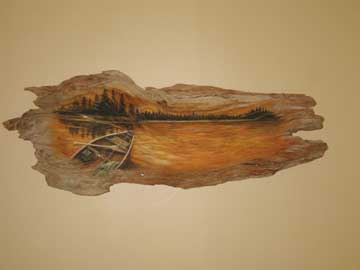
I have some driftwood I want to use and have brushed it and blew it with my compressor. What else do I have to do to use it? I plan on using it for artwork. – Bob Ballmann
Tim Inman: Smell it on a hot humid day. Depending upon where the driftwood was harvested, and where you live, it might make a big stink when it warms up and gets humid. You don’t need that. My wife has a jar of seashells in one of our bathrooms. She and her aunt collected them from the beach in Florida one winter. When our Iowa summer heat and humidity take over – even though we air condition – that jar gets stinky and the whole room smells. So, beware of “scented” driftwood. Aesthetics aside, you might want to apply a sealer to help prevent my worries. It would also consolidate anything that could contribute to dust and dirt chalking off over time. A soak in a pan of diluted material would be an easy way to accomplish this. Dusting with something like rottenstone afterwards to return the “natural” weathered appearance would help keep the “look.”
Chris Marshall: Now that your driftwood is clean, if it’s thoroughly dry, I’d say go ahead and use it for your artwork. If it came from the ocean and you plan on adding a topcoat over the wood, it may still have salt residue in the wood tissue. In that case, I’d try some different finish options on a test piece, just to make sure the finish you want to use will cure properly and prevent the wood from leaving a chalky residue from the salt. One safe bet would be to use shellac as a sealer over the wood. It cures over nearly everything and seals in all sorts of stains and smells. Either brush it on or spray it from an aerosol can, then topcoat the wood with any finish you like. Or, just apply a couple more coats of shellac for an all-in-one finish.





